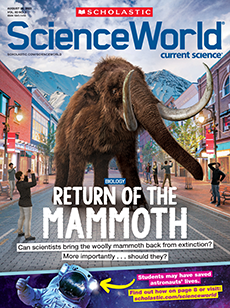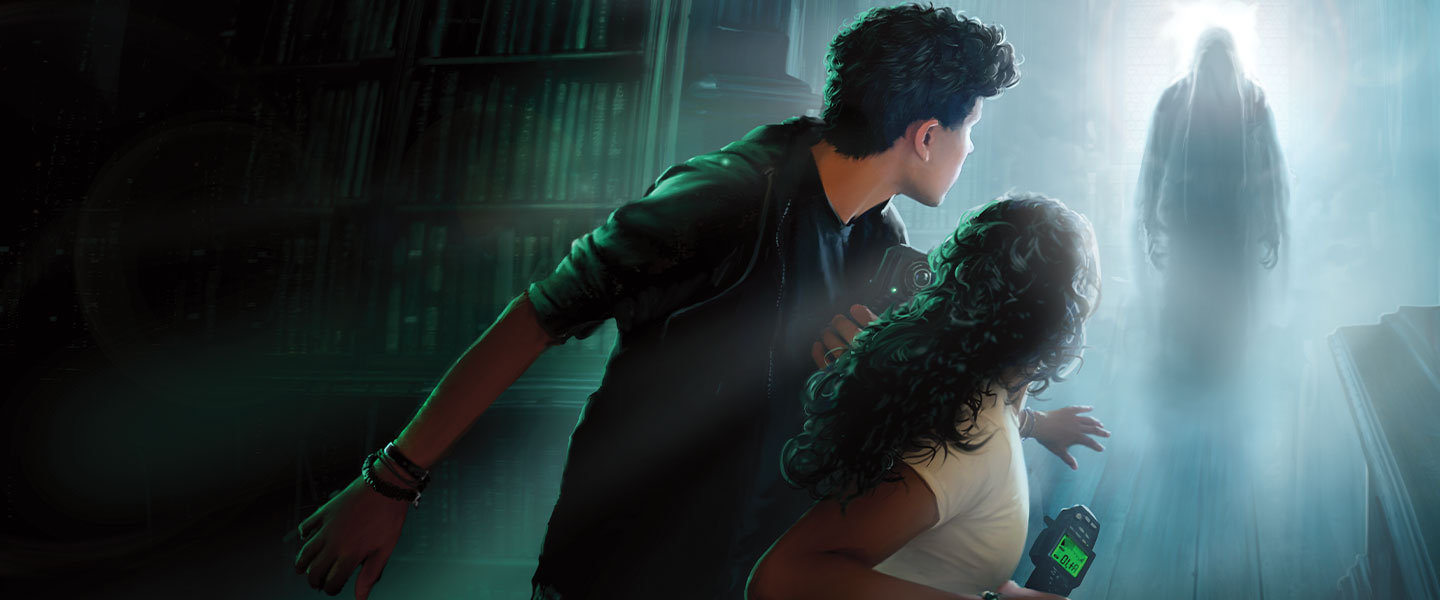It was after hours at the Coventry Public Library (CPL) in Rhode Island. The building’s lights were off. It was pitch-black and eerie. The library should have been empty, but something was lurking inside: a group of teens, led by librarians Lauren Walker and Kylie Staigers. They were exploring the darkened rooms—armed with digital instruments from the library’s ghost-hunting kit. That’s when things got surprisingly spooky.
“Two strange things happened that night,” says Walker. First, the EMF meter kept going off near a supply closet. This device detects changes in electromagnetic fields (EMFs)—energy waves surrounding charged objects. EMFs can show up around wall sockets, during thunderstorms, and in many other places. At first, the group thought the meter was being triggered by video games stored in the closet. But no other electronics in the library set the meter off. The second strange occurrence had to do with the library’s automatic doors, which were closed and locked. “There was no one around,” says Walker. Then, all of a sudden, the doors started quickly opening and shutting! “It was so bizarre and got us all riled up.”
It was after hours at the Coventry Public Library (CPL) in Rhode Island. The building’s lights were off. It was pitch-black and eerie. The library should have been empty, but a group of teens lurked inside. Librarians Lauren Walker and Kylie Staigers led the group. They were exploring the darkened rooms with digital instruments from the library’s ghost-hunting kit. Then things got surprisingly spooky.
“Two strange things happened that night,” says Walker. First, the EMF meter kept going off near a supply closet. This device detects changes in electromagnetic fields (EMFs), or energy waves around charged objects. EMFs can appear around wall sockets, during thunderstorms, and in many other places. Video games were stored in the closet. At first, the group thought the games were triggering the meter. But no other electronics in the library set it off. The second strange occurrence involved the library’s automatic doors. They were closed and locked. “There was no one around,” says Walker. Suddenly, the doors started quickly opening and shutting! “It was so bizarre and got us all riled up.”

